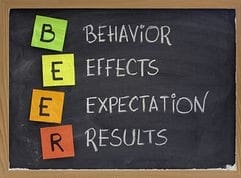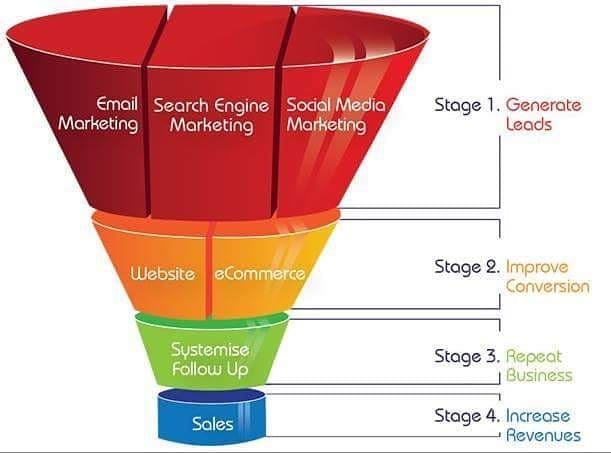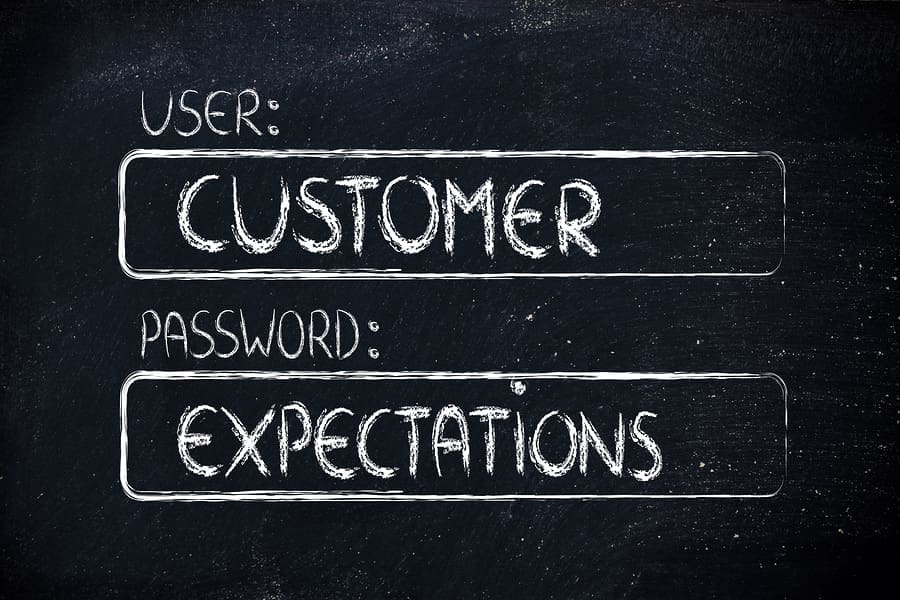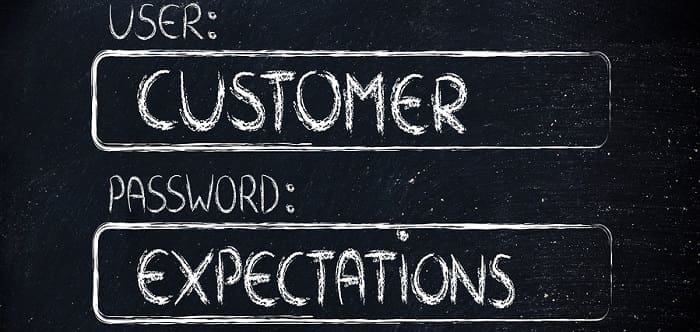Want to know what turns a website visitor into a product buyer? There are many facets to selling online, especially if you use a sales funnel.
Here you will discover all you need to know to start converting web visitors into buyers. You do it by managing their expectations, gaining their confidence, and getting them onto your sales funnel.
Taking these actions will in turn influence your visitor into thinking that he or she is making a buying decision, when what he/she is actually seeing was engineered to influence him or her to buy.
A Sale Starts Before The Visitor Hits Your Landing Page
It is imperative that you manage the expectations of your potential customers. Expectation management begins before your viewer even reaches your web page.
If you are able to influence what people see and hear prior to reaching your landing page, then you have a far better chance of converting the customer.
Does Managing Expectations Mean Targeting?
Targeting is a big part of managing your potential customers’ expectations, but it is only part of the process. If you target your consumers very well, then your landing pages will fill with warm leads.
On the other hand, if you target your consumers poorly, your landing pages will be briefly filled with uninterested people who will quickly bounce from your website.
Why Is Managing Expectations Important For Conversion?
If you want to convert people from lookers into buyers, then you need to gain access to them prior to them reaching your website so that you may influence them in some way.
Many eCommerce websites do this by writing guest posts about their products and linking back to the product landing page.
ECommerce websites are able to manage expectations by writing good things about their products in their guest posts.
When the viewer clicks the link within the guest post, he or she has already been exposed to the eCommerce website’s products in a positive light.
A more popular method for managing a potential buyer’s expectations is affiliate ads.
As the webmaster, you are able to control what the viewer sees on the affiliate advert, hence you are able to exact some sort of influence over the viewer that thereby affects what the viewer expects from your website/landing page.
Affiliate adverts are also great tools because they allow you to target very effectively.
For example, you can pick the types of keywords that your target audience would choose, and you can even dictate which geographic locations your adverts will appear in as well as what time of the day they will appear.
Does It Matter Whether I Manage Expectations Or Not?
Let’s say that Barry is a man with a very low income, and he is looking for a new kettle.
He sees a link to a website that says, “High quality Kettles” and another link to a website that says, “Economy Kettles.”
Each link sets Barry up with a certain expectation. He is not going to click the “High Quality Kettles,” but he will click the “Economy Kettles” link.
When he reaches the landing page for the economy kettles, he will “Expect” to see cheap kettles. If he finds cheap kettles, then he will buy.
That is the power of managing his expectations.
The link for “High quality kettles” may be packed with cheap kettles that Barry can afford, but he is unlikely to click the link.
Even if he were to click that link, he is “Expecting” to find expensive kettles, so he is unlikely to buy.

Your Warm Lead Arrives On Your Landing Page
Let’s say that you have well targeted your consumer, and let’s say you have managed his or her expectations.
In this situation, your web page visitor will be a warm lead. It is a person who is able and willing to buy.
You now have to convince him or her to actually convert from a viewer to a buyer.
At this point int he sales process, you should hit your viewer with your main selling point.
It has to appear in the top third of the web page (especially if the viewer is visiting with a mobile device browser).
The selling point should be directly related to whatever expectation your viewer had upon landing on your website.
If Barry is looking for cheap kettles, then show him some cheap kettle prices and/or discounted options within the top third of the page.
Pile Benefit On Top Of Benefit On Top Of Benefit
Below the main selling point, you should add another selling point. Do not talk about features on your landing page; talk about benefits.
Under the main selling point should be another selling point (a benefit). Below that, there should be another selling point, and another, and another.
Do not brag about features at this stage, but focus on the benefits of your product.
- Don’t say, “Our freezers have an auto-defrost mode.” Say that the freezer is very low maintenance.
- Instead of saying that your freezer uses 20% less energy than its leading competitors, say that it is an energy saving freezer that will save the owner money on his or her power bill.
- Don’t say that the freezer has three removable shelves. Say that the freezer has been designed to ergonomically fit more food in than ever before.
Create A Sales Funnel That Starts With Your Landing Page
Your viewer is now on your landing page, is a warm lead, and is bowled over by your selling points and benefits. It is now time to get your visitor into a sales funnel.
A sales funnel is another word for the customer’s experience that leads him or her towards a decision to buy.
Some say that the sales funnel starts before the viewer ever visits your web page, but we are starting from your landing page.
Create a sales funnel by asking yourself which product your viewer will be interested in.
Once you have decided what each particular customer wants to buy, you need to give that person a unique user experience via your website.

An Example Of A Sales Funnel Experience
Sally is 36 and is in the lower middle class. She has one child and is divorced.
Your market research suggests that she will opt for a sleek black kettle. She sees the tab for kitchen appliances and takes note of the great benefits you demonstrated on your landing page.
Sally winds up on a page where the black kettle looks marginally nicer than the others do. She then notices that the black kettle is running low on stock and that it has been discounted seven percent from the original price.
All of this is part of her sales funnel. It has been engineered by you to entice a 36-year-old divorced woman into buying your black kettle.
The kettle isn’t really running low on stock, the other pictures look less appealing by design, and the seven percent discount is just to draw her eye to the product.
Sally is impressed by the black kettle, so she clicks through to the product page. This is where she sees all the benefits listed and their paired features.
For example, she sees that the kettle will save her 35% on her power bill compared to other kettles, because it 180 Watts. Your website says that the kettle is durable (benefit) because of the aluminum shell and stainless steel bottom (feature).

The Sights, Sounds, And Prompts That Lead Somebody To Buy
Your sales funnel includes everything each customer demographic sees when he/she/they visit your landing page. Set up a different landing page for each demographic if you wish.
For example, if you have an eCommerce website selling toys, you might draw kids in to your toys pages by posting on Facebook and creating a kid-friendly landing page to link to. You could create a separate landing page for older men.
You might post links to high quality and long-lasting toys on Google+, and have them land on a page made especially for them. The landing page would have a very different theme to the one the children’s landing page has.
Perhaps the adult landing page starts a sales funnel that sells the idea of buying toys for his/her children that are good value for money, educational, eco-friendly, healthy and safe.
Remove Hurdles And Repeatedly Test Your Website
The key to making a sale on your website is to remove any hurdles to your success. This is especially true when dealing with your checkout.
If the checkout procedure takes too long to render, if the page takes too long to load, if the captcha puzzle is too difficult, or if there are any hindrances to your user’s progress–then each of those would represent a hurdle that should be removed.
Conclusion – Record, Test, Trial & Error….and Common Sense
That is all you need to know in order to start turning your website visitors into buyers. Influence them before they arrive, show them benefits, get them ion your sales funnel, lead them towards the product you wish to sell, and show them your product in detail before the viewer buys.
Just remember to test your current marketing, landing page and sales funnel to be sure it is optimized for the type of viewer who will visit your website.
Featured Image provided by the author under his or her own license.
Disclaimer: The views and opinions stated in this post are that of the author, and Return On Now may or may not agree with any or all of the commentary.
Robert Morris
Latest posts by Robert Morris (see all)
- How to Convert Your Website Visitors into Buyers - April 11, 2017





